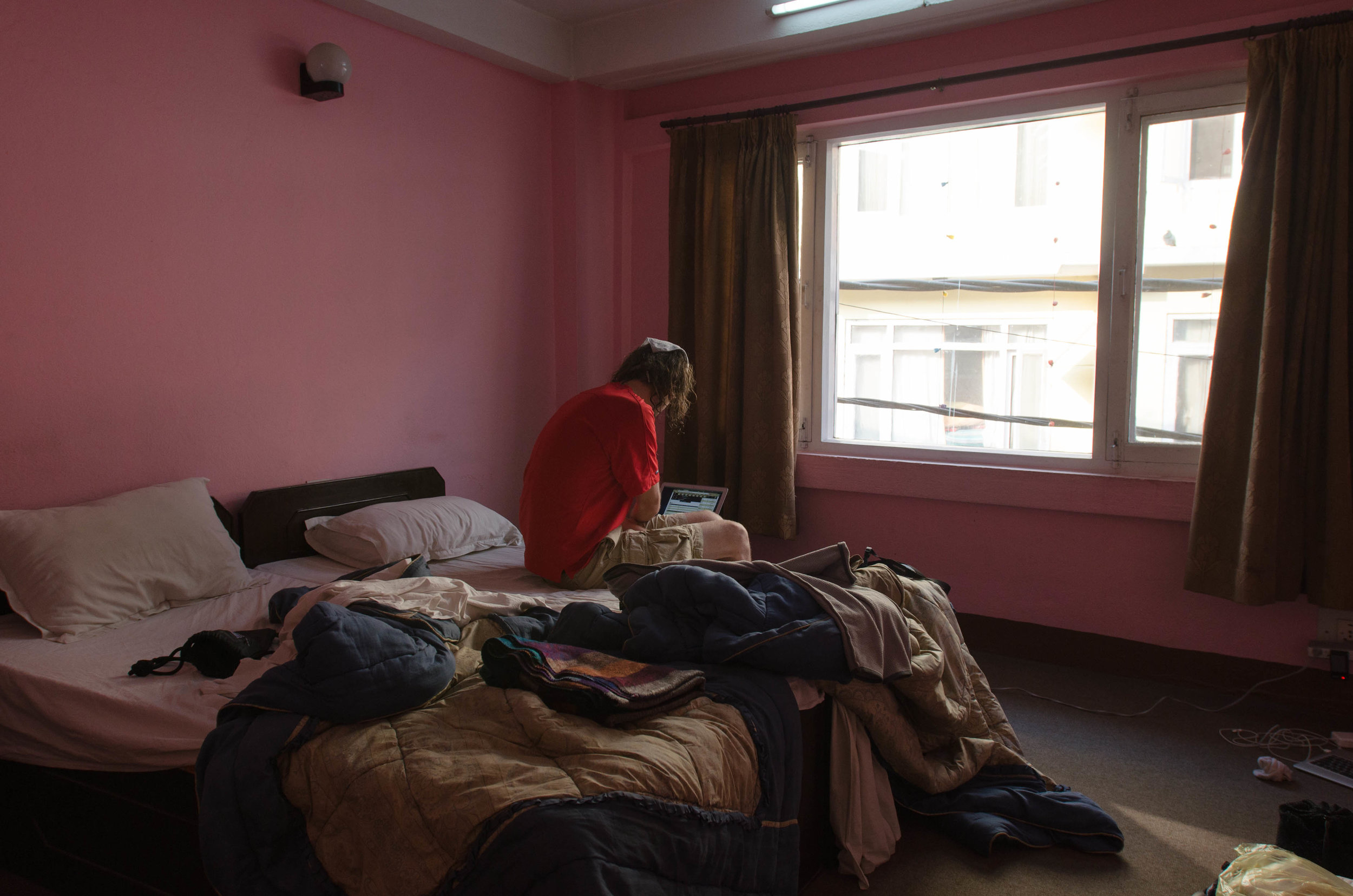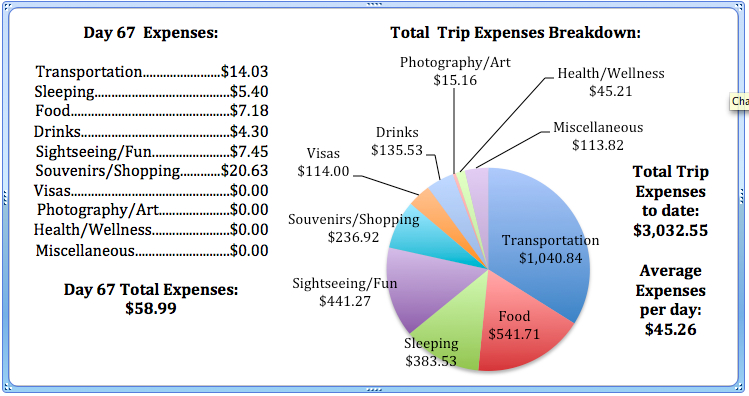After an hour and a half waiting inside the tourist agency for our $25.00 car and driver for the day, we finally set off to see the thre must-sees of the city. Seriously, an hour and a half! We went to this agency because they brought us into the city at a fair price, and quoted us a cheap car (we think because they thought we would sign up for a trekking tour with them when they gave us their sales pitches for every. possible. tour.) on our first night in Kathmandu.
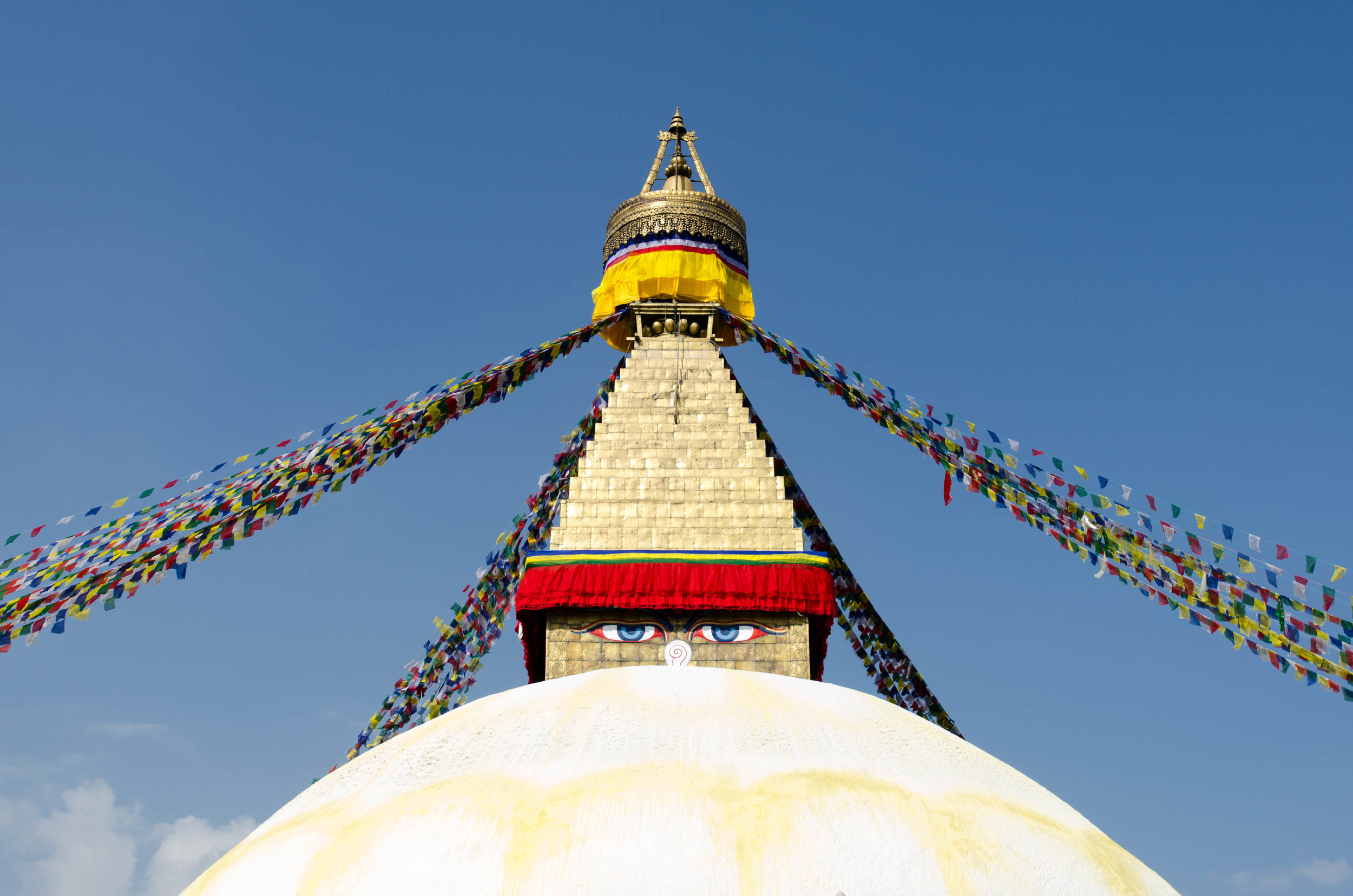
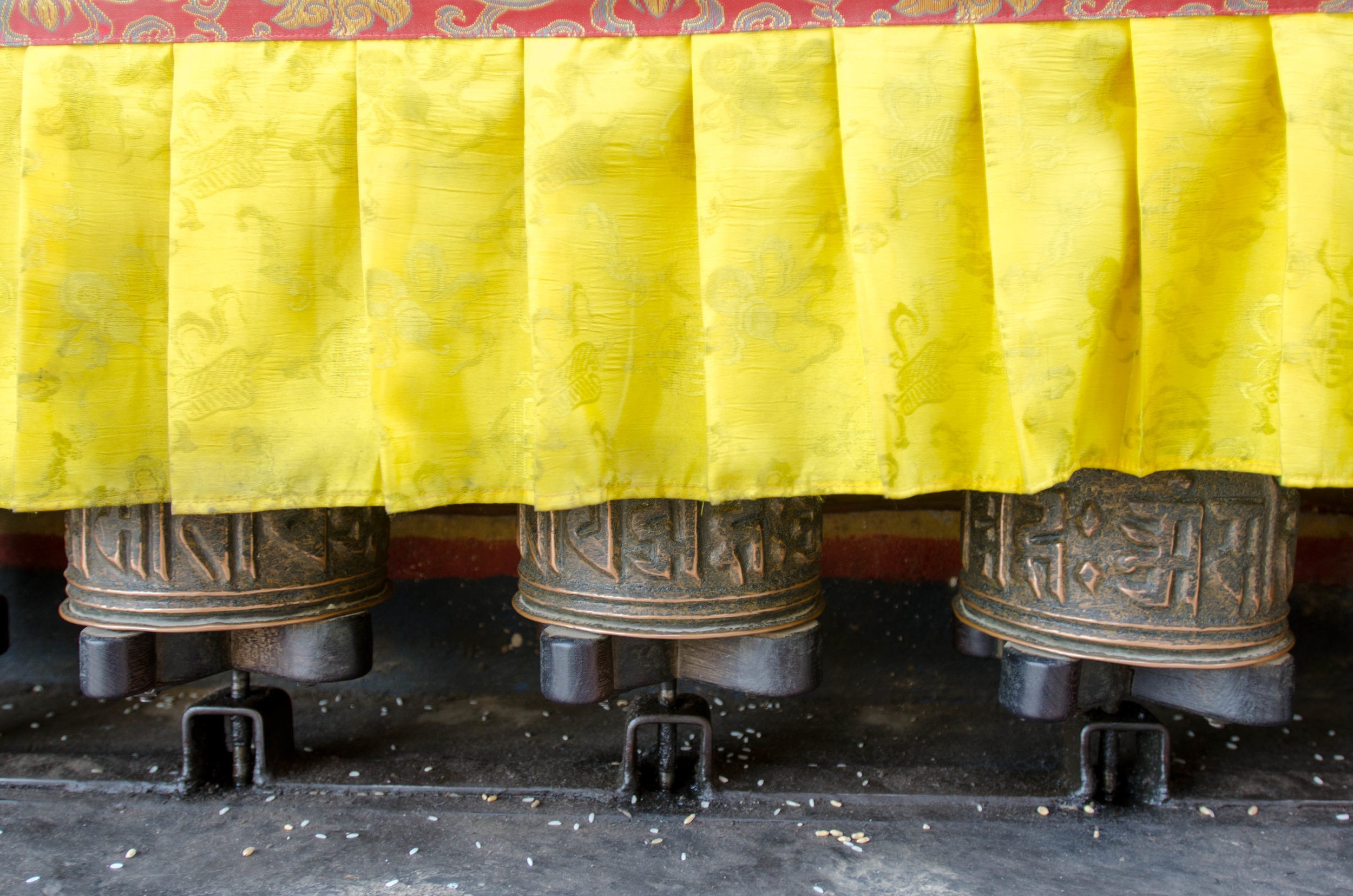
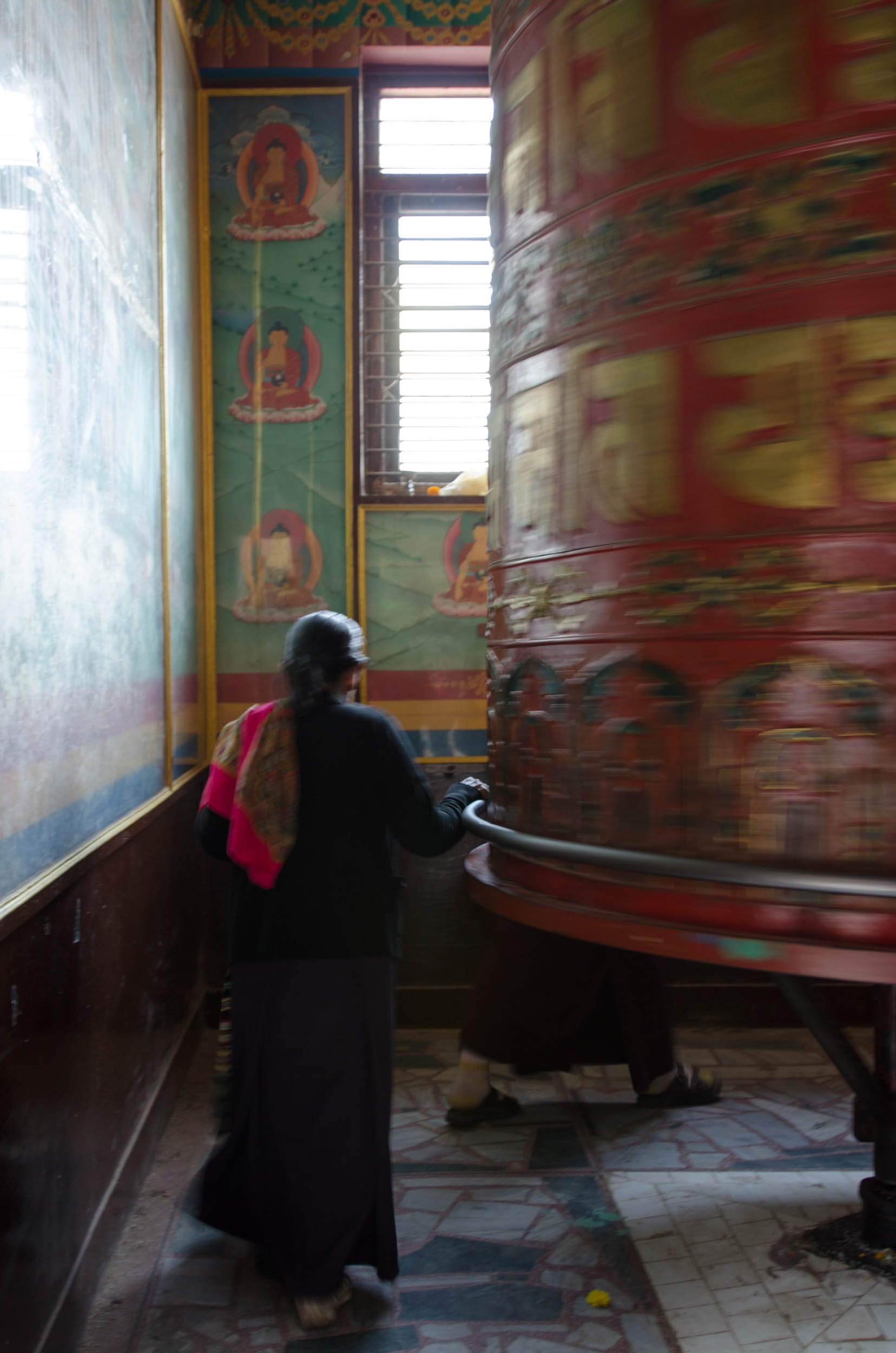
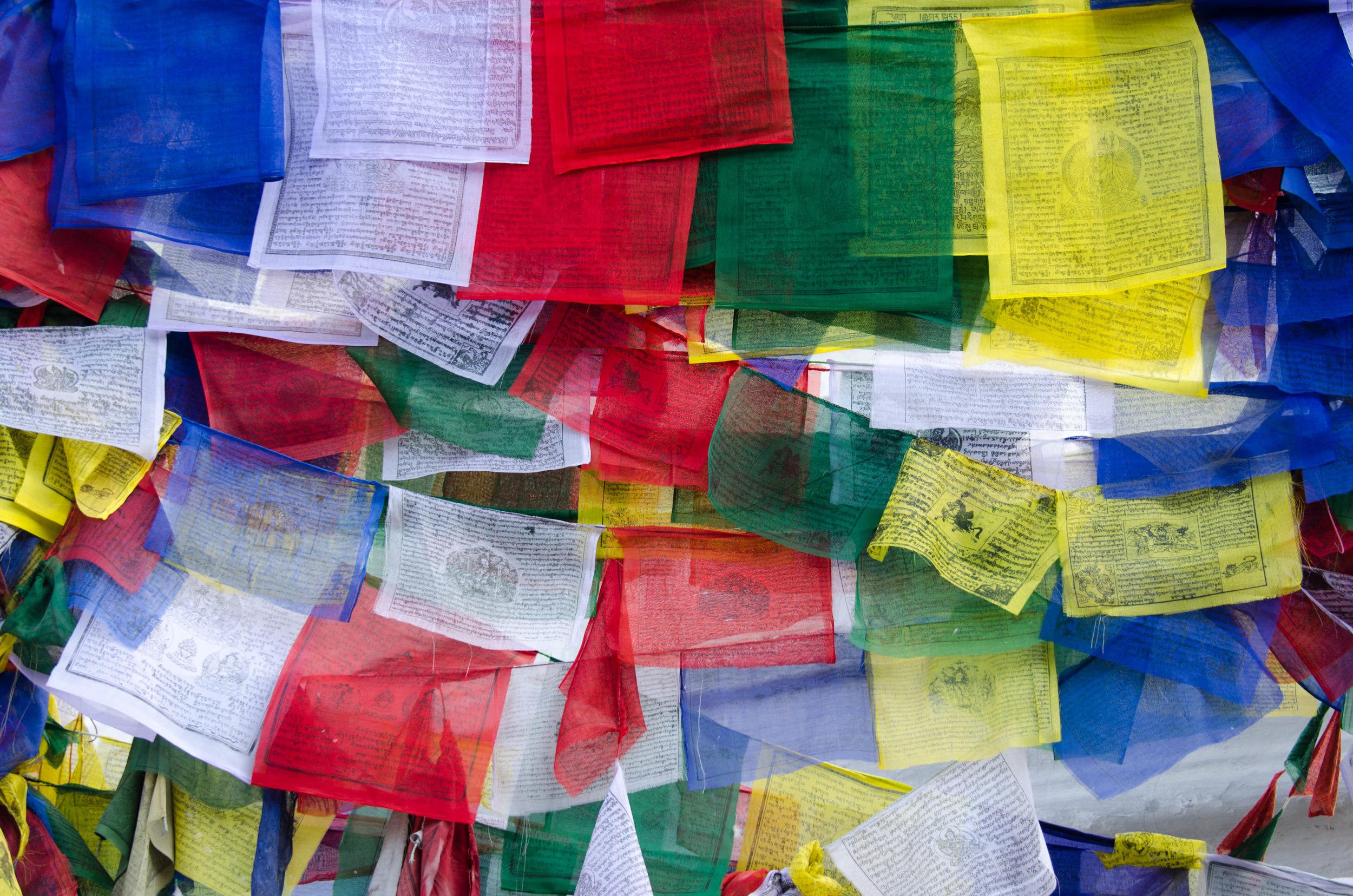
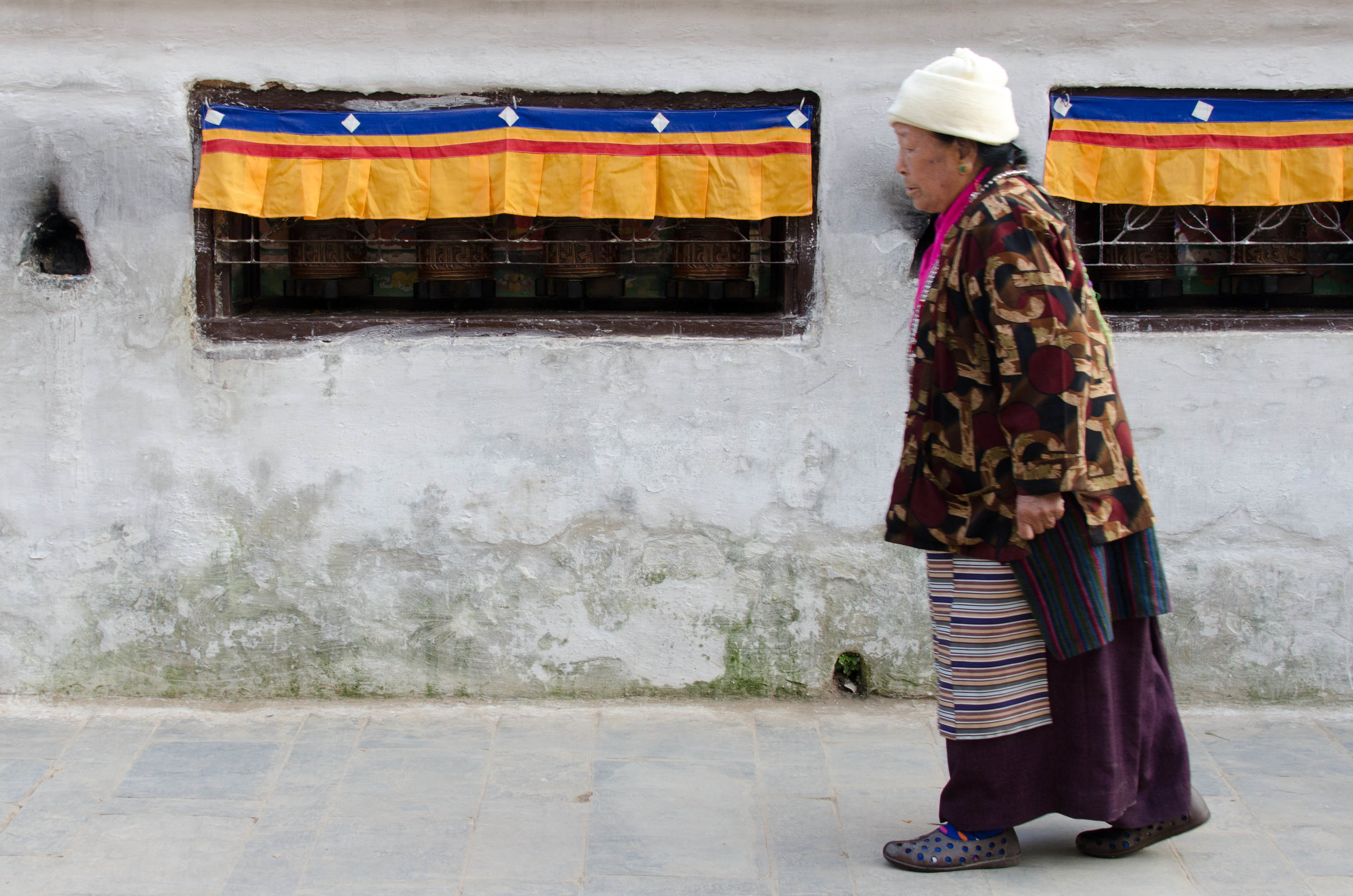
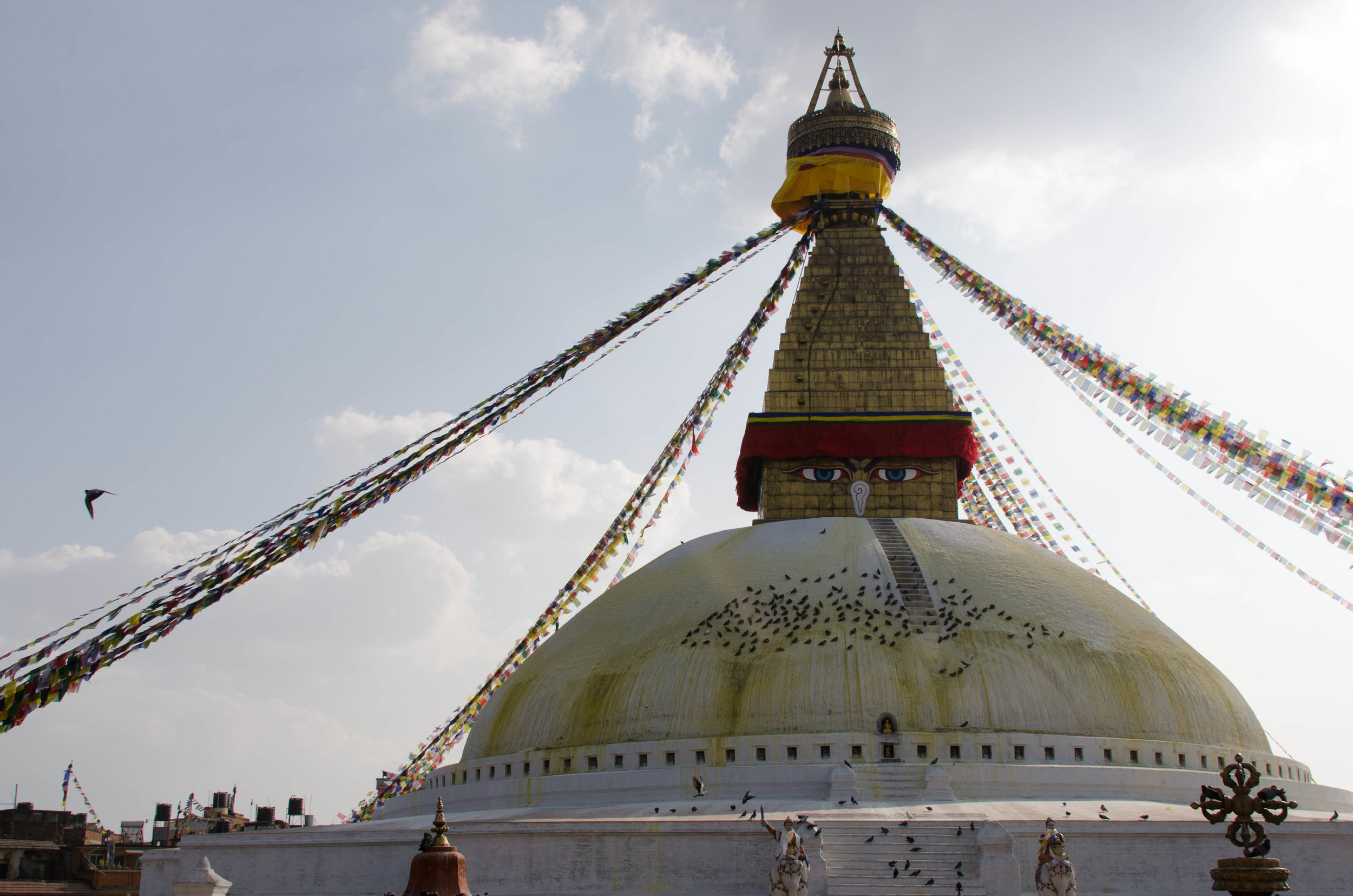
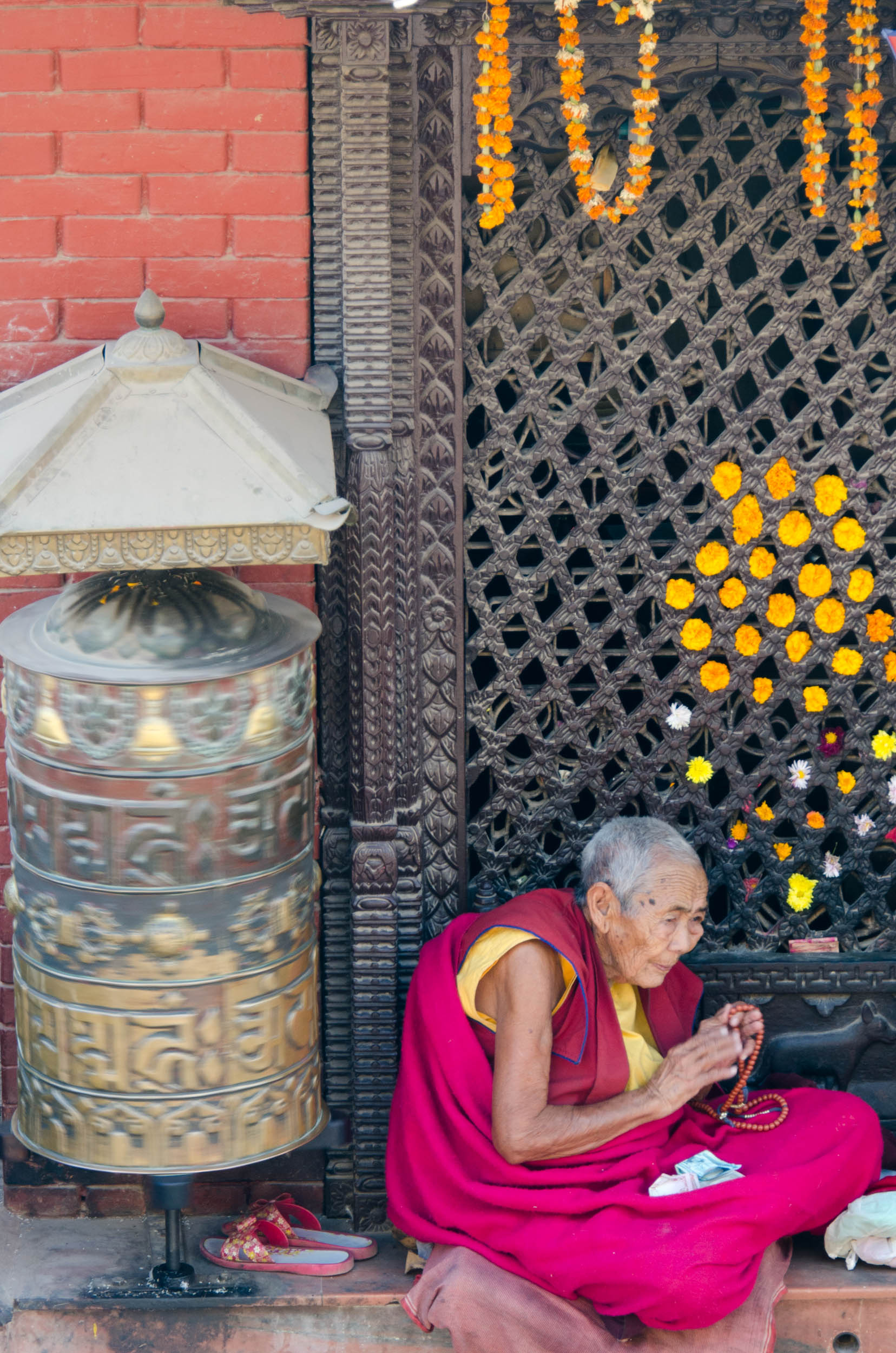

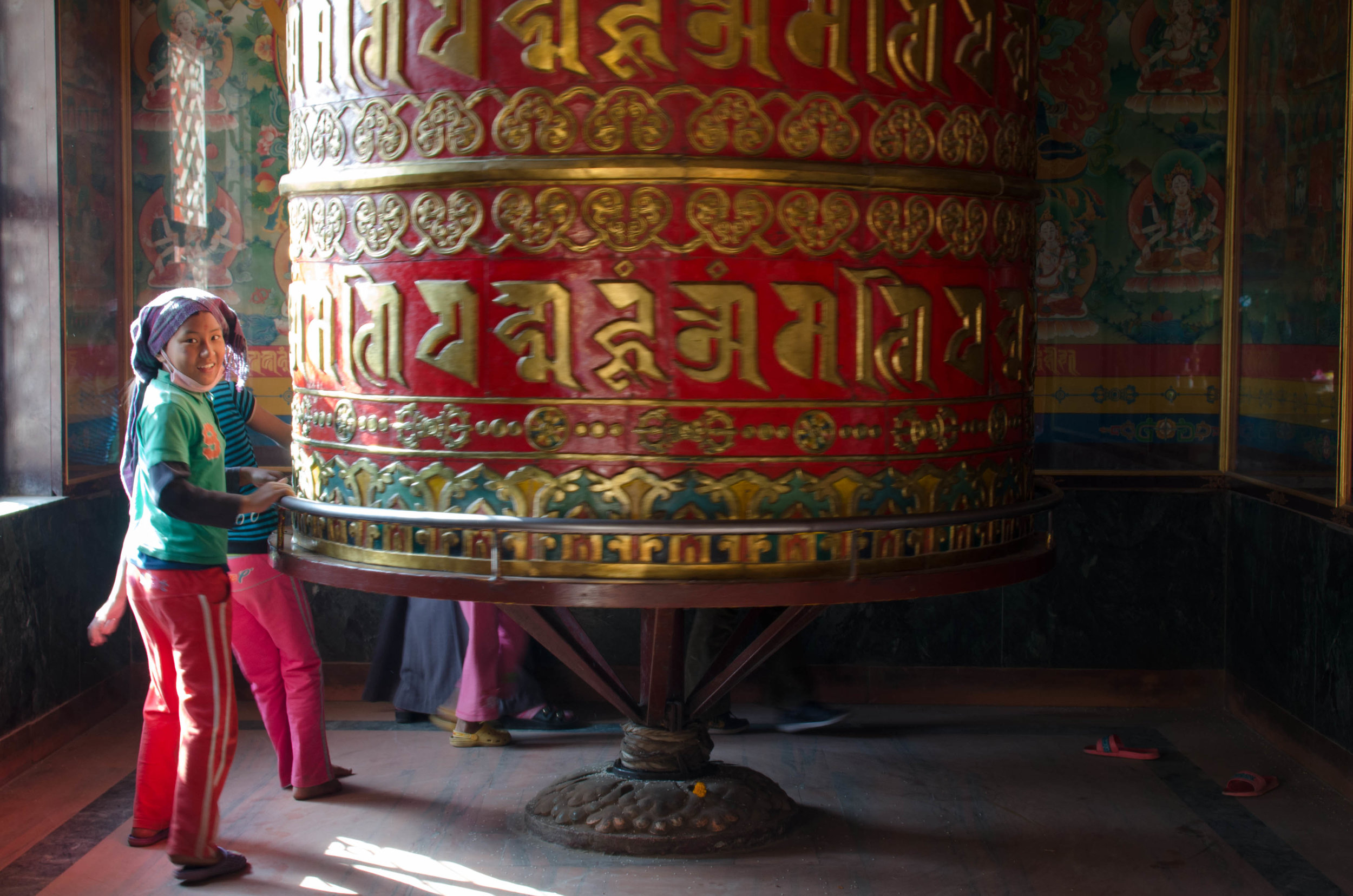

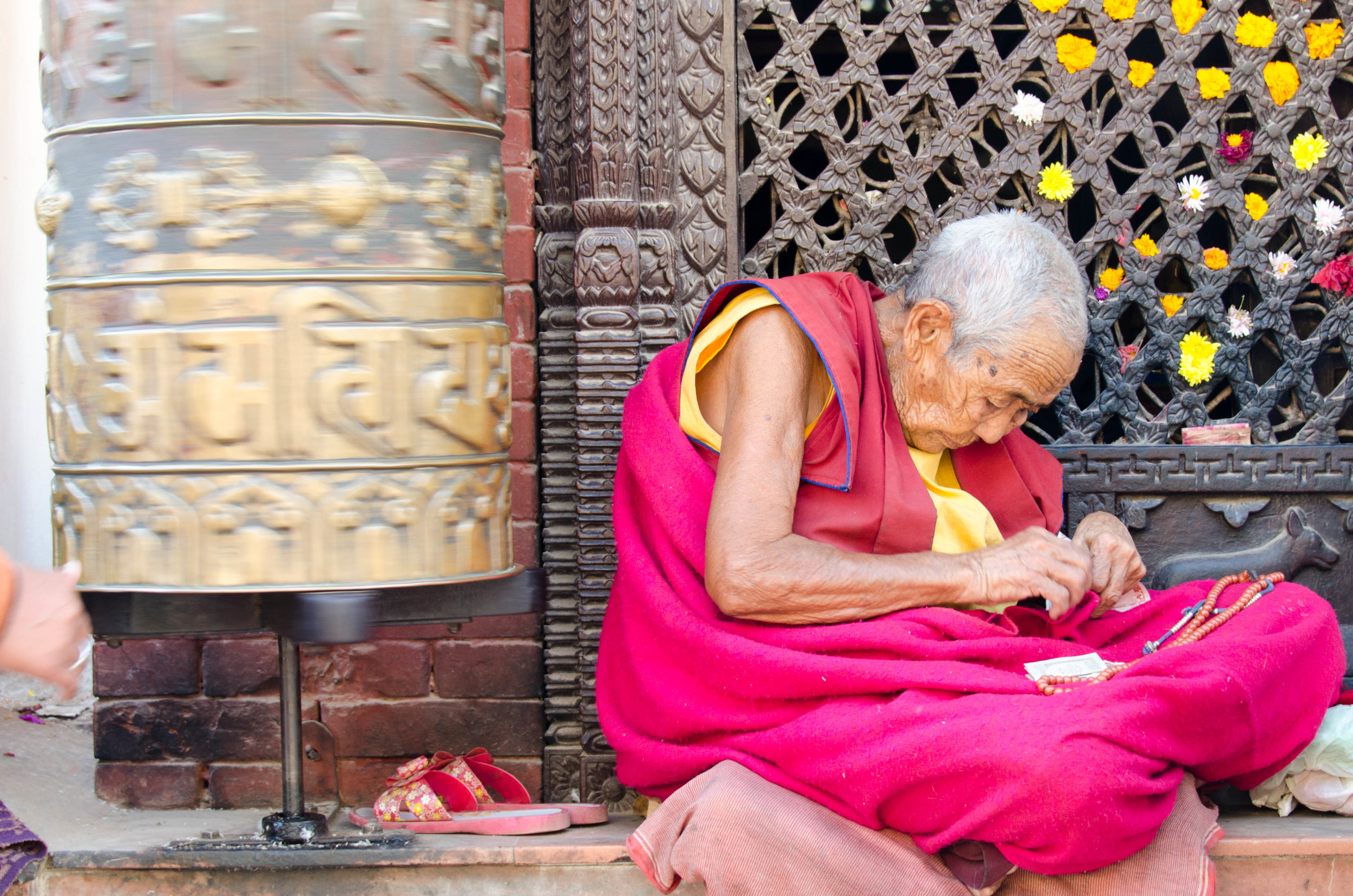
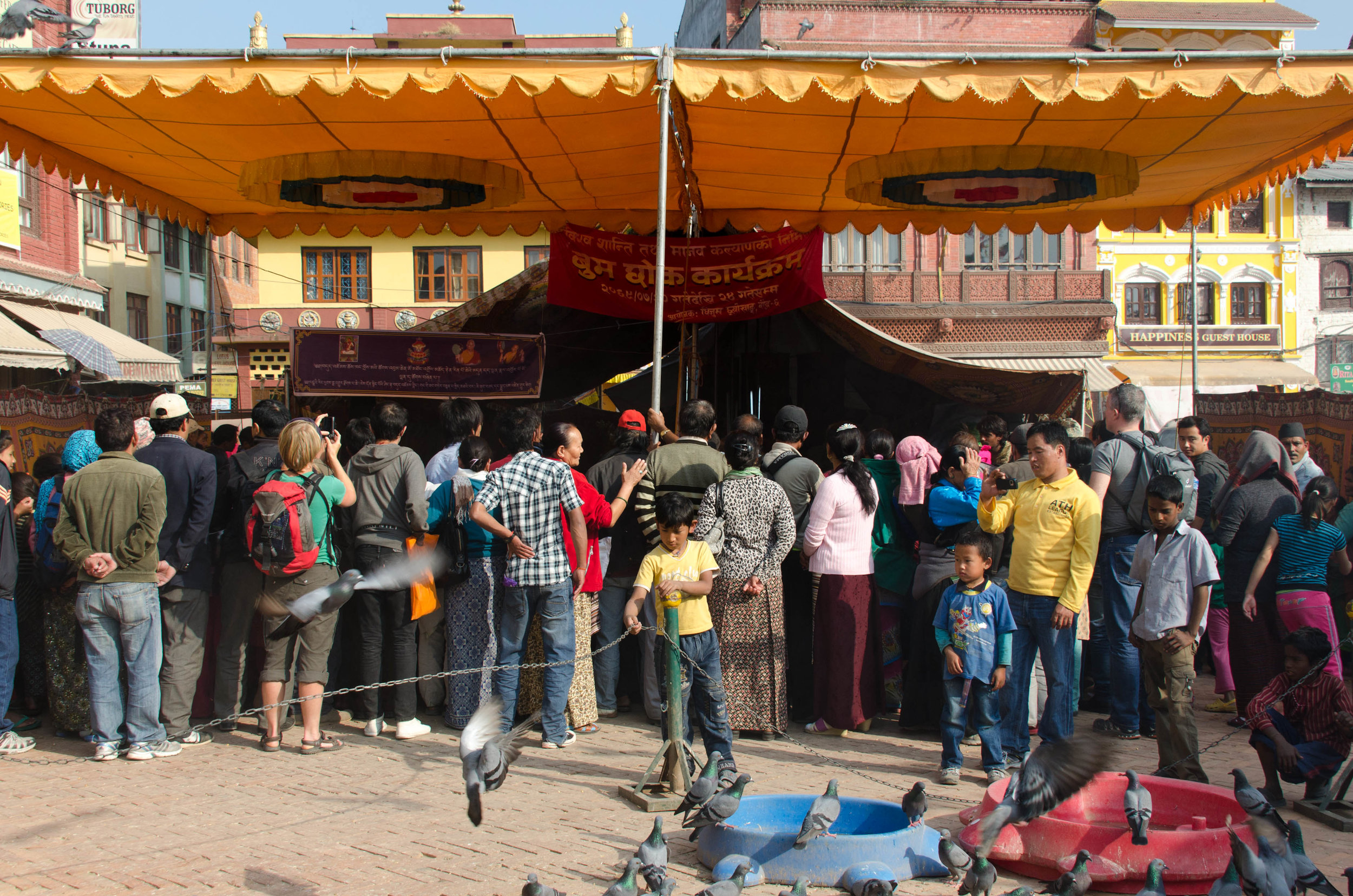
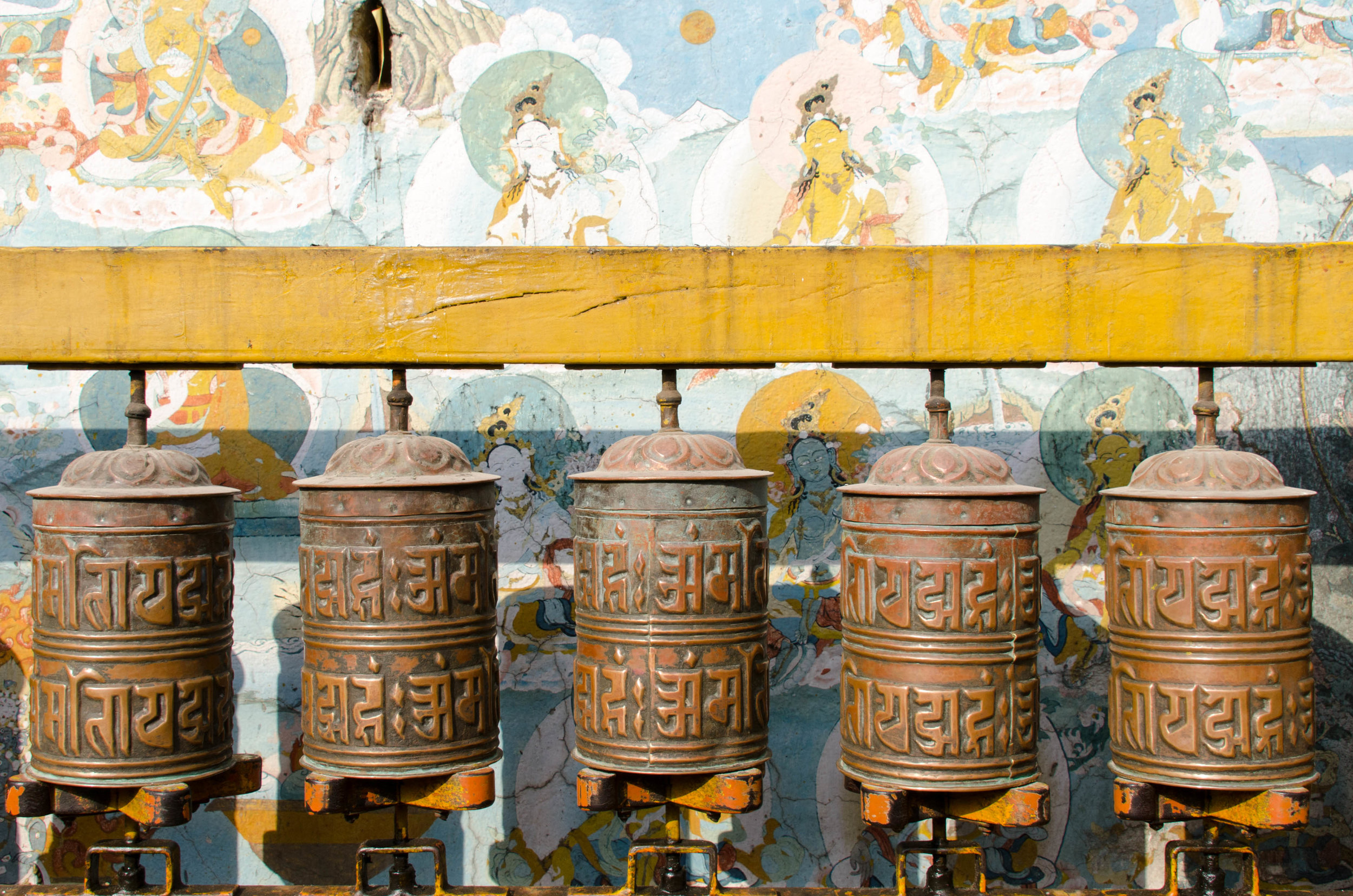
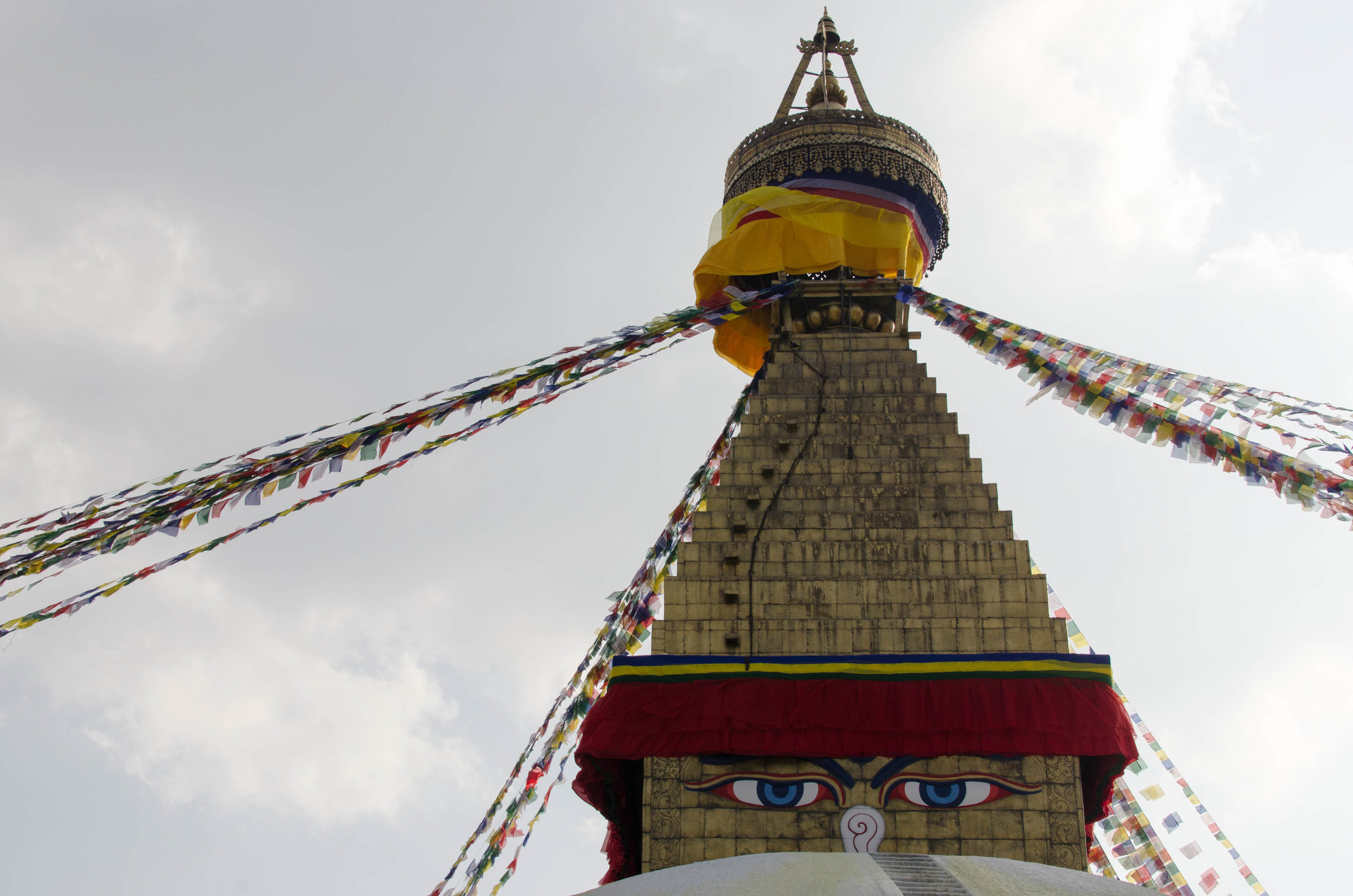
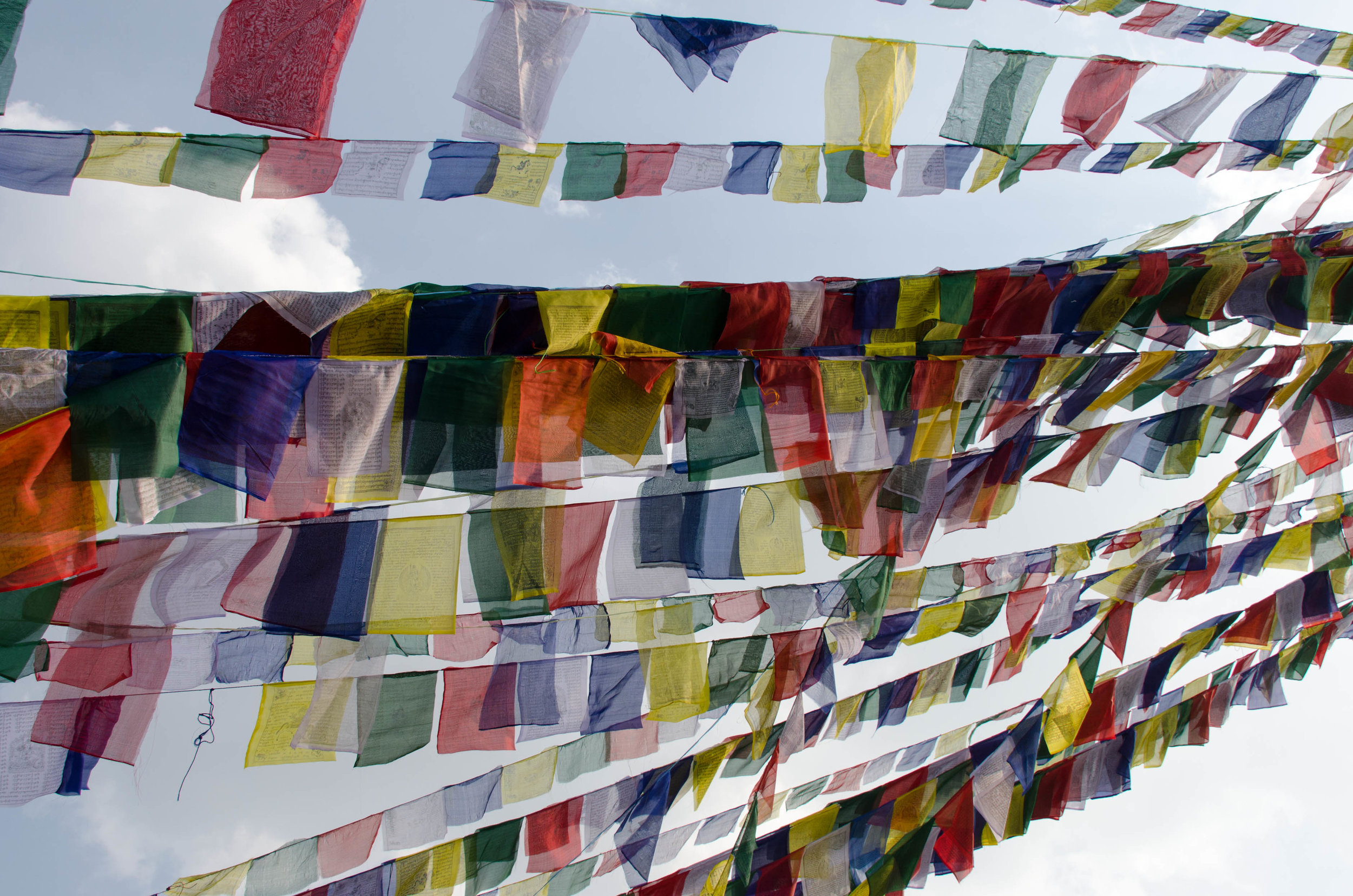
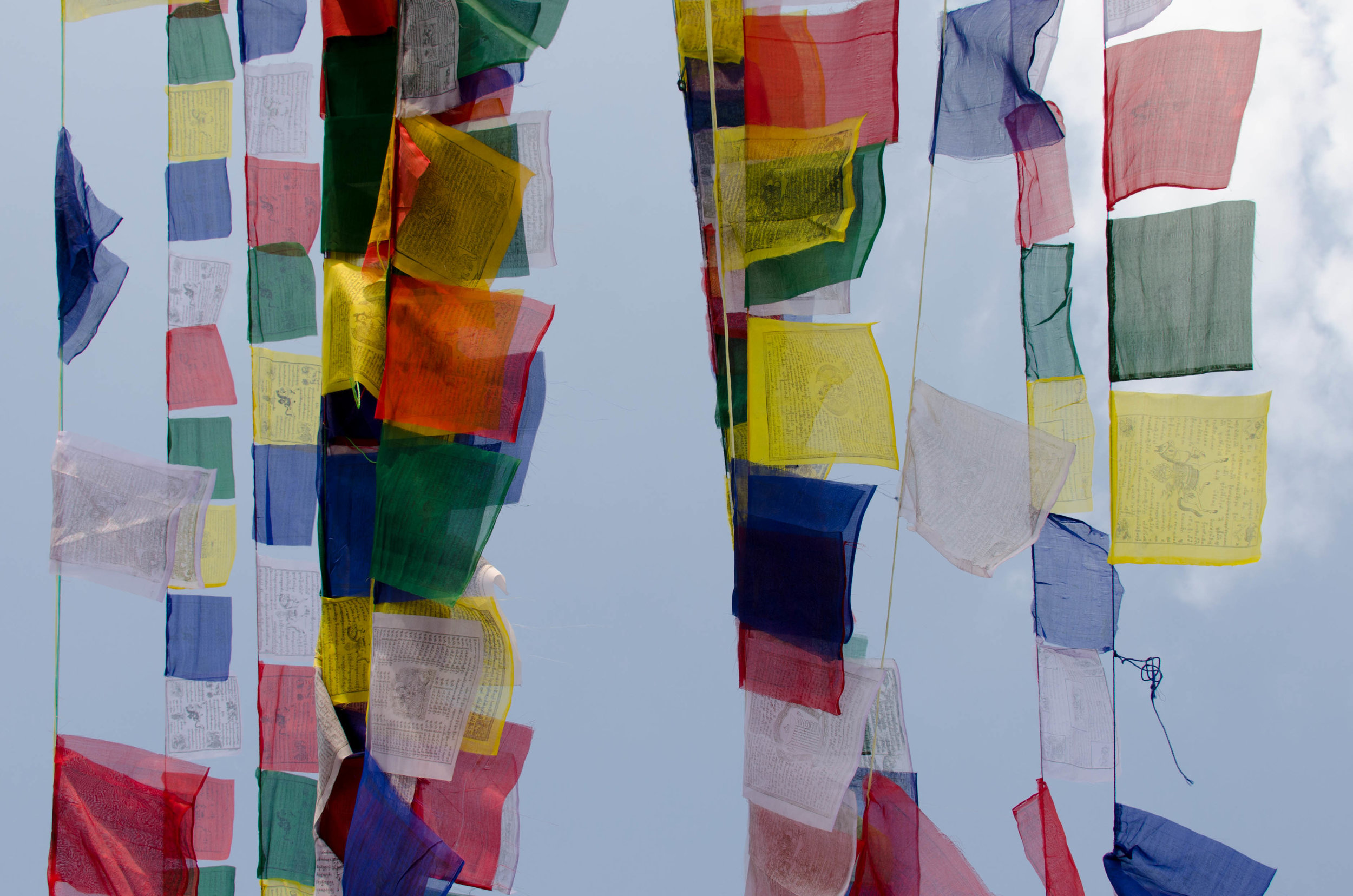

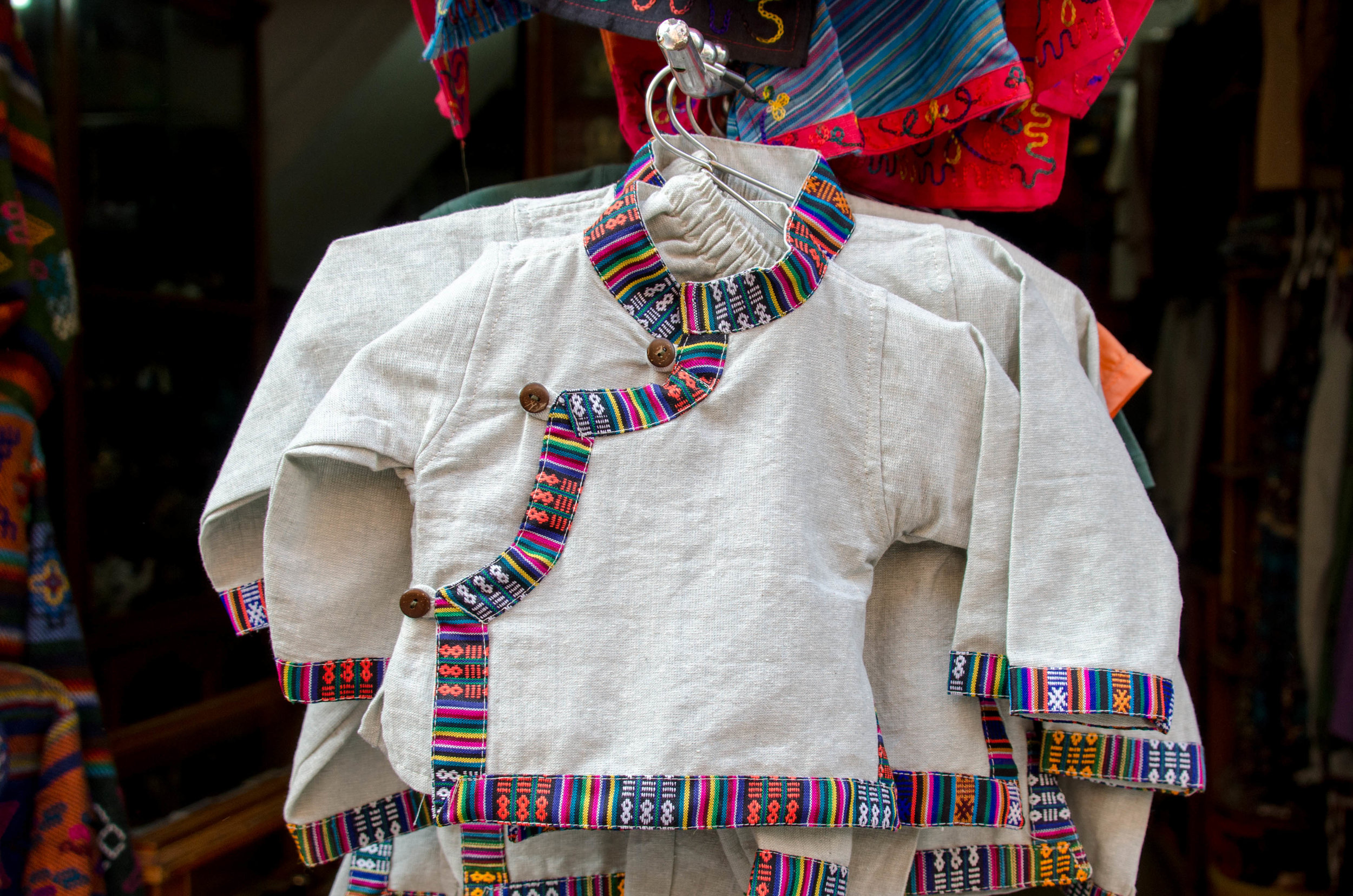
By the time we were on our way to Boudhanath, we had little patience for the Kathmandu traffic, and were anxious to see something, walk around, and do more than just sit and wait! Despite the tourists and the army of Chinese photographers, Boudhanath was a site to see, followed by a somewhat morbid experience at Pashupatinath, and an expected (after Kathmandu Durbar Square the day before) visit to Patan Durbar Square.
Boudhanath is one of the most important places of pilgimage for the Buddhist.It's the center of Himalayan Buddhist and studies in the Kathmandu Valley. According to the pamphlet we were given with our entrance ticket, it's one of the largest and "most significant" Buddhist monuments in the world.
Basically, Boudhanath is a giant stupa with different legends concerning its origin. My favorite is the legend from teh Himalayan Buddhist who believe a widow is responsible for what is now one of the four UNESCO World Heritage Sites in Nepal. Jyazima (the widow) didn't have much money as a chicken seller, however she wanted to make a large offering to Buddha. When she asked the local king for permission to make a great offering, he said yes, but she had to use an area of land "measuring the size of a single buffalo skin." She agreed, but instead of laying the skin on the ground as one might do normally, she cut the skin into strips, laid the strips end to end, making a large area, and claimed the land that lie inside the buffalo strips. Genius- right? All of the rich got upset at her "trickery" and complained, but the king stood by the permission granted to Jyazima. It's suggested that the meaning of the stupa has her name in it, but I didn't see this anywhere, aside from the pamphlet handed out about Boudhanath.
We walked around the stupa, clockwise like pilgrims and other visitors following suit. There were so. many. people. And while it was cool, again, it was a hard balance to strike between paying our respects to this holy site and not getting annoyed with the other tourists and photographers that were everywhere. Lots and lots of prayer flags were strung up, and I enjoyed listening to them flap in the wind almost in perfect sync with the prayers that were being chanted. A man oiled the prayer wheels around the base of the stupa after his son ran ahead to spin them all before him. Monks sat tiredly watching the tourists go by, and vendors hawked religious artifacts. It was nice, but when we arrived back at where we started, we were ready to go.
Andrew says I do not have the budget (let alone room in the old backpack) to buy adorable baby clothes when one of our own is not in our near future. He's right. However, I thought a little Nepali/Tibetan outfit might be the perfect addition to my new collaboration with Zengerine.com. In the very near future, there will be a collection on Zengerine.com where items I have found around the world will be featured and select items will be sold to lucky buyers! More on that later, but seriously, how cute are these shirt-jackets?
Our next stop was Pashupatinath, one of the most significant Hindu temples in the world. Tourists are not allowed inside, but instead free to pay a steep entry fee to roam around the outskirts of the temple and then along the banks of the Bagmati River. This river is a spiritual property where Hindus are cremated along side the banks only after they are dipped into the river three times. While we were there, several fires were blazing, and one body was carried down to the bank and covered with a cloth waiting to be carried and dunked into the river. We didn't get a guide, because we knew we had little time (thanks to our hour and a half sucked up at the travel agency office in the morning) and didn't want to rush someone else explaining what was going on. It felt wrong being there, not only as an observer, but again, watching other tourists take pictures of the cremations, river, and most likely mourners sitting on its banks. It didn't help that every few yards someone would approach us asking if we would like a guide (for a fee, of course) and dressed up Sadhus (wandering monks, most likely dressed in gold robes and lots of make-up) sat idly by for pictures (for a fee, of course) which made me question their dedication to achieving liberation if they spent their time pimping themselves out for pictures.
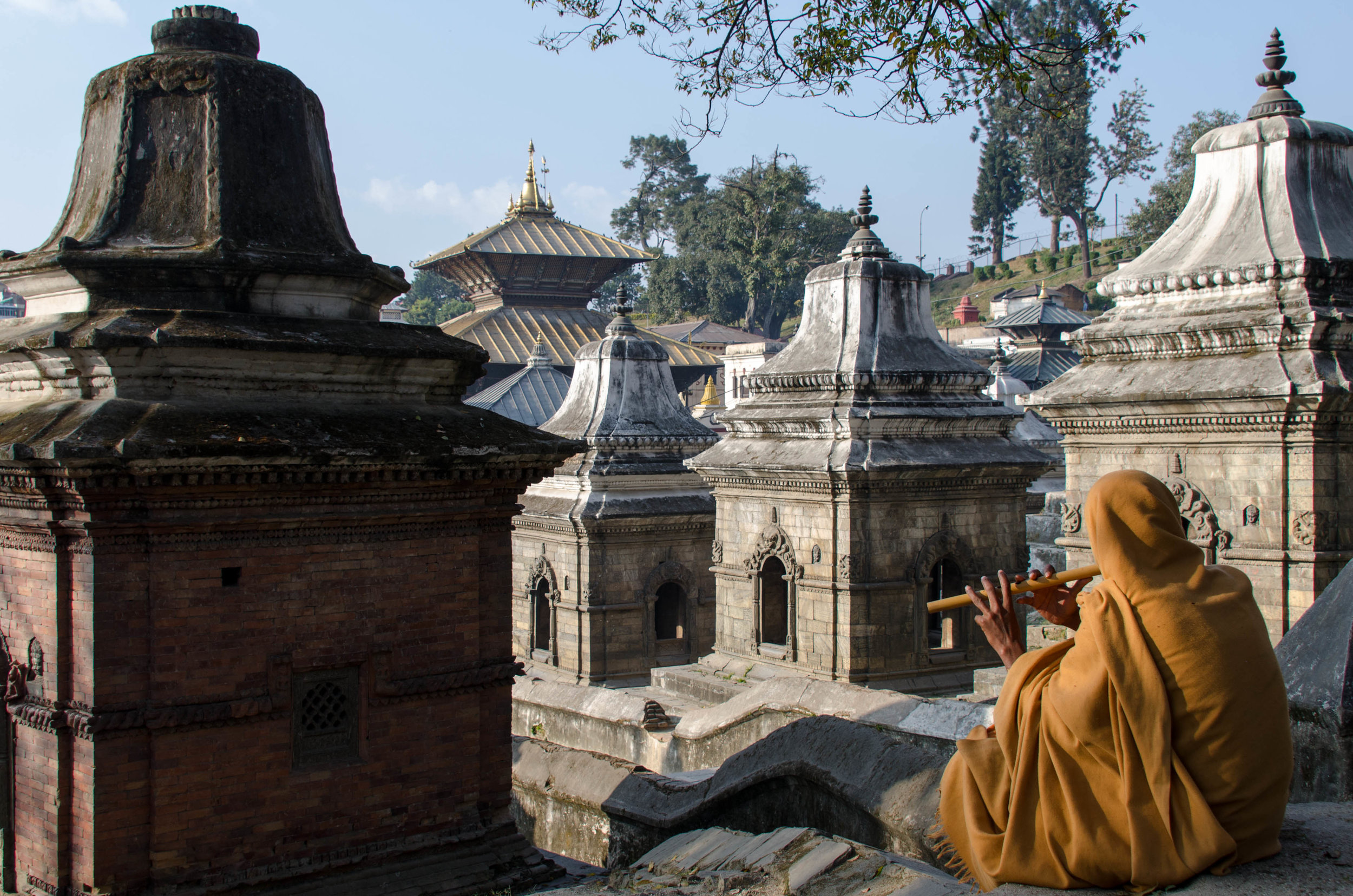
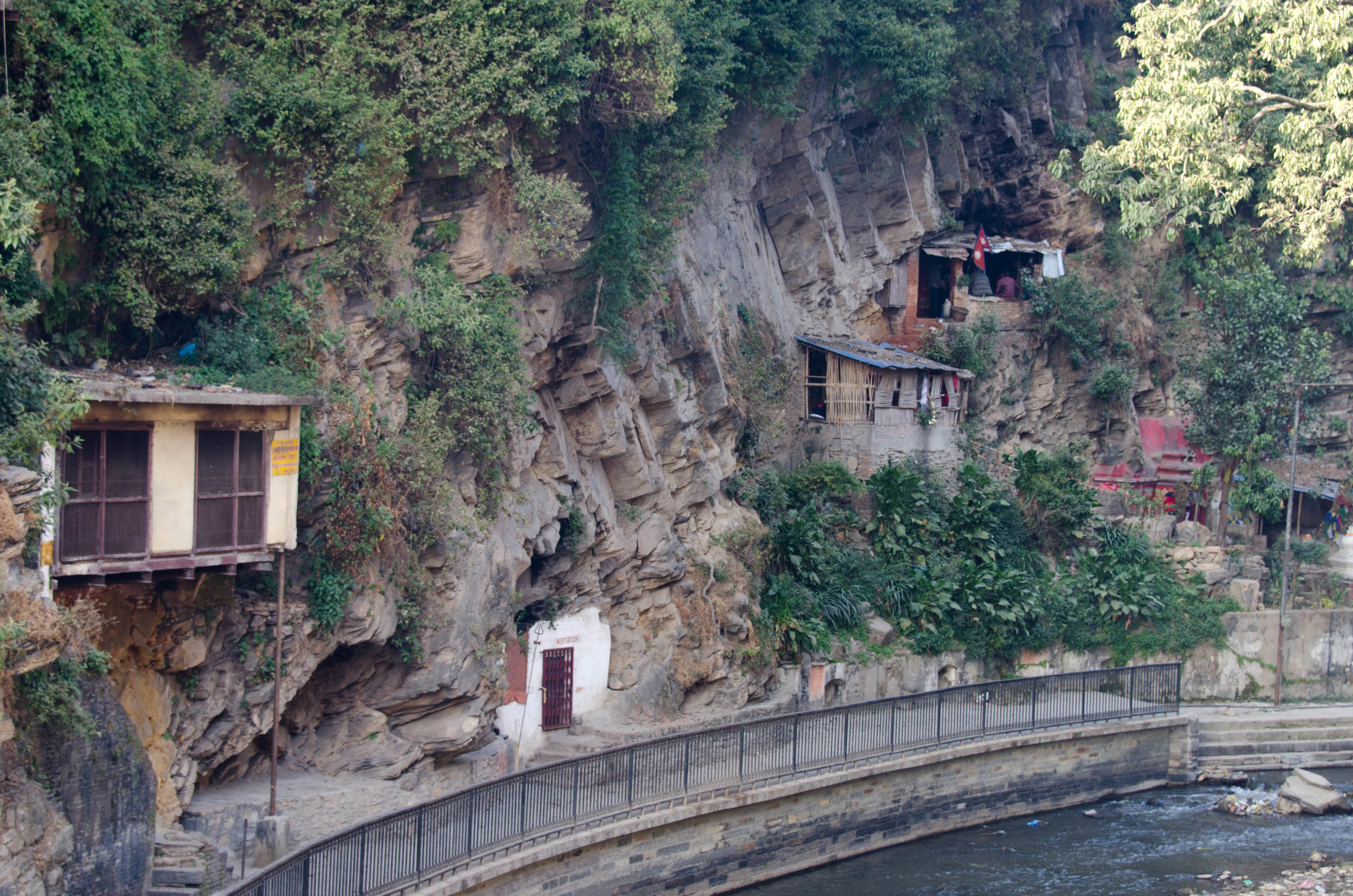
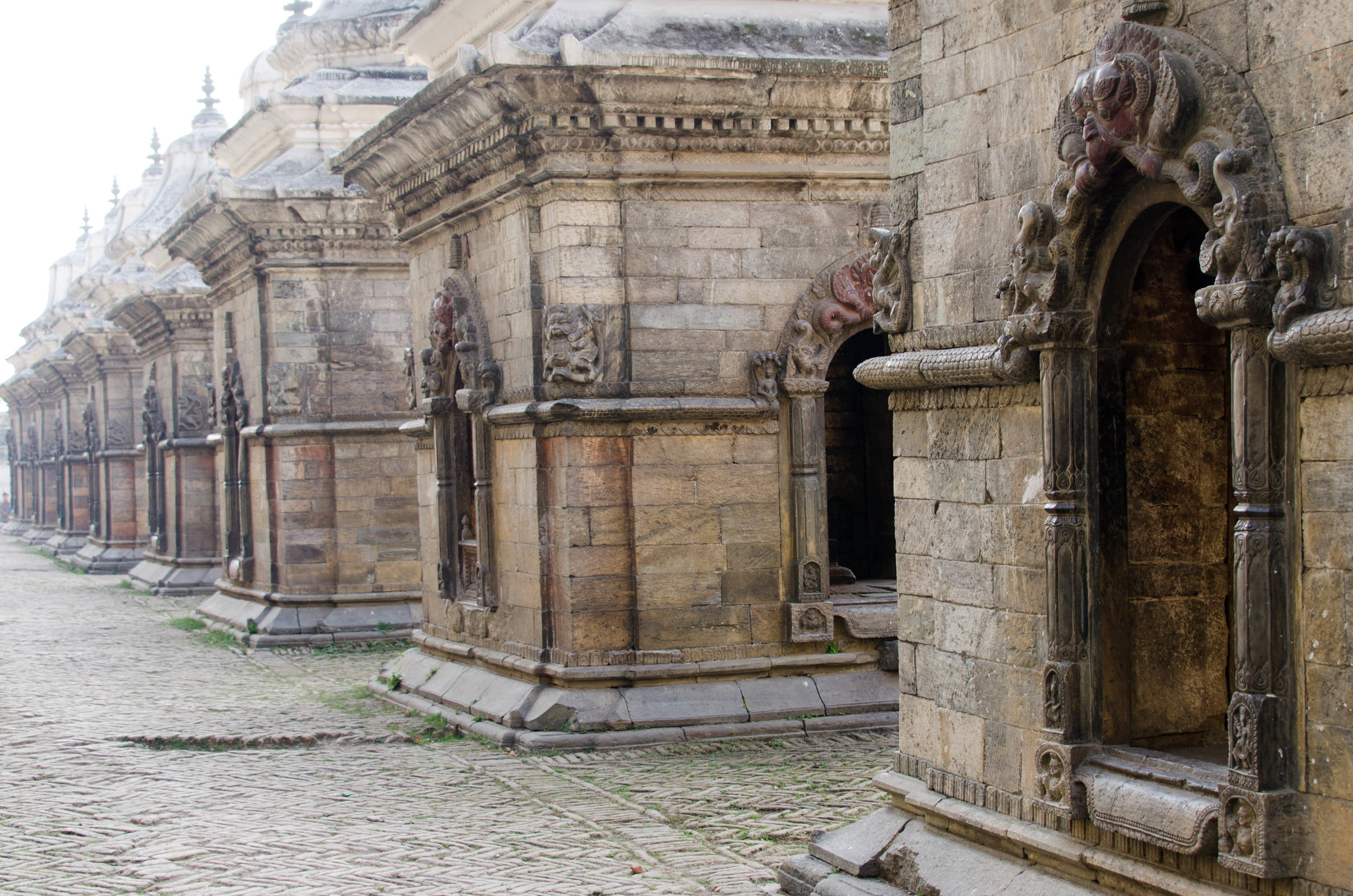
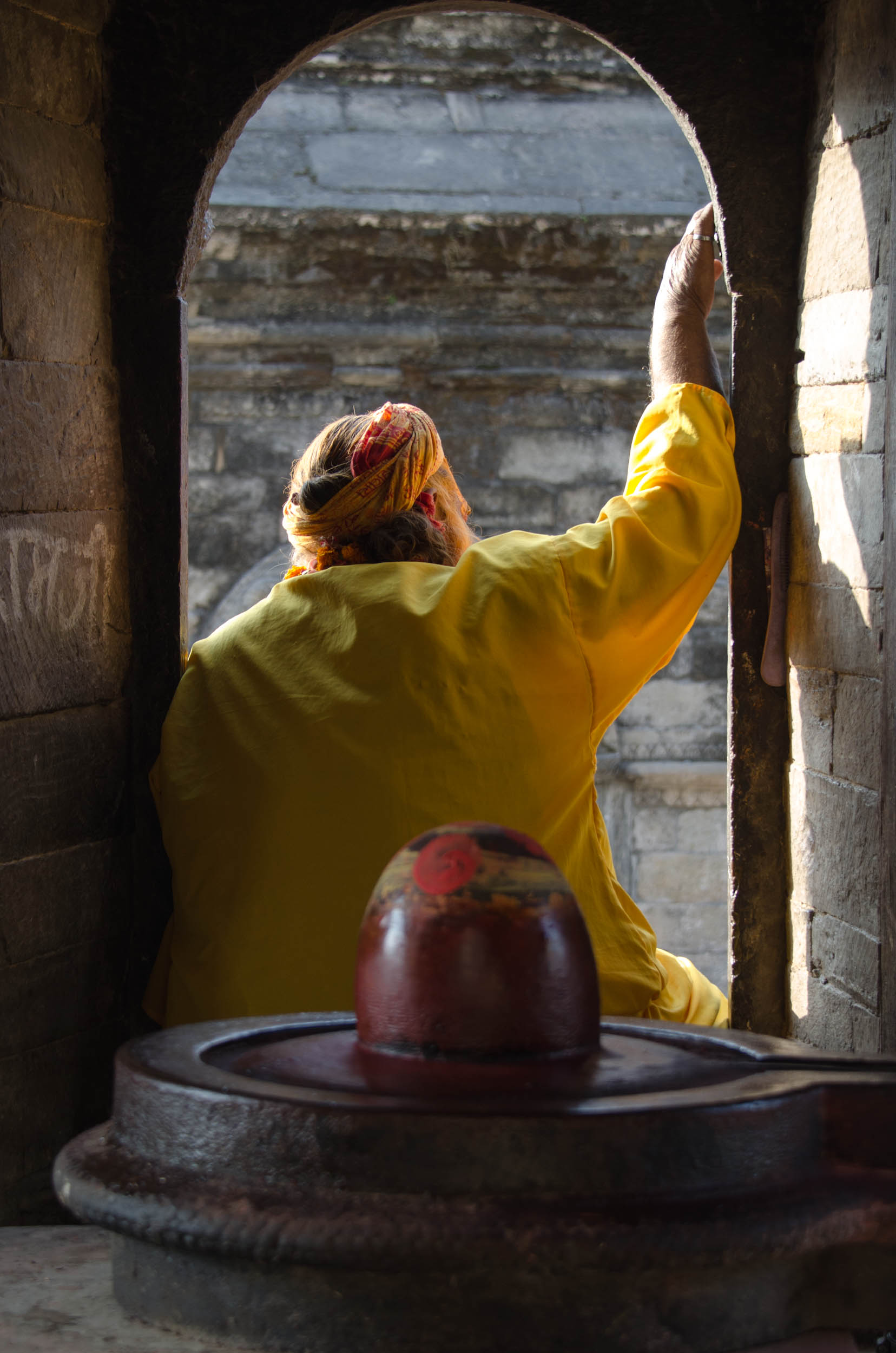
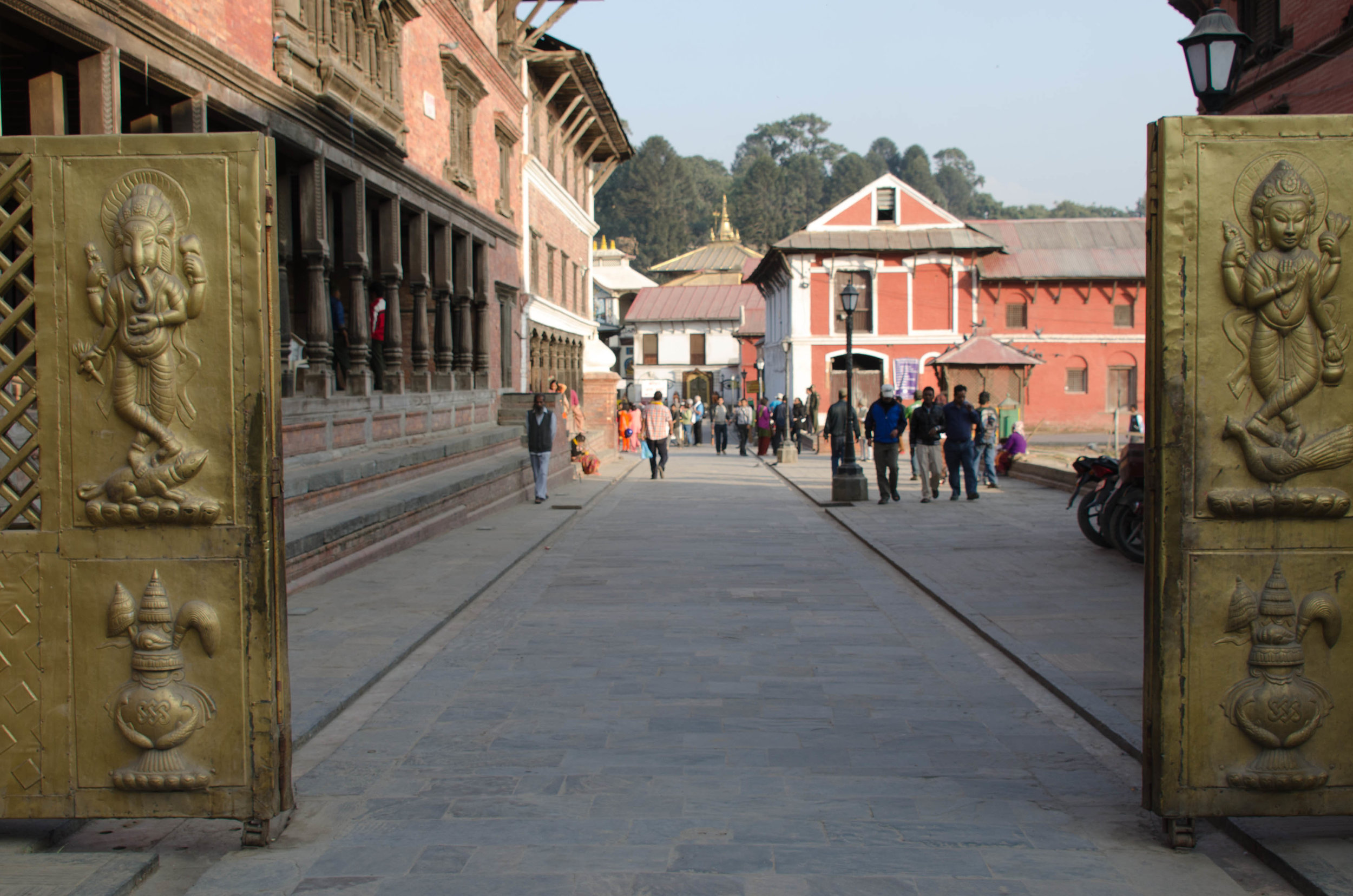
I didn't take many pictures, and only one brief video of the far sided entrance. It didn't feel right. What pictures I did take were of the grounds away from the funeral like activity or of the backs of the Sadhus.
It was approaching dusk by the time we got to Patan Durbar Square. Again, somehow we managed to walk right in without paying for an entrance fee. (I swear, we weren't doing this on purpose!) It was much like Kathmandu Square, and people watching was the thing to do. So, that's just what I did. But not for long, because Kathmandu is cold once the sun goes down, and my fleece and yoga pants combination simply are not warm enough allowing me to stay out late.
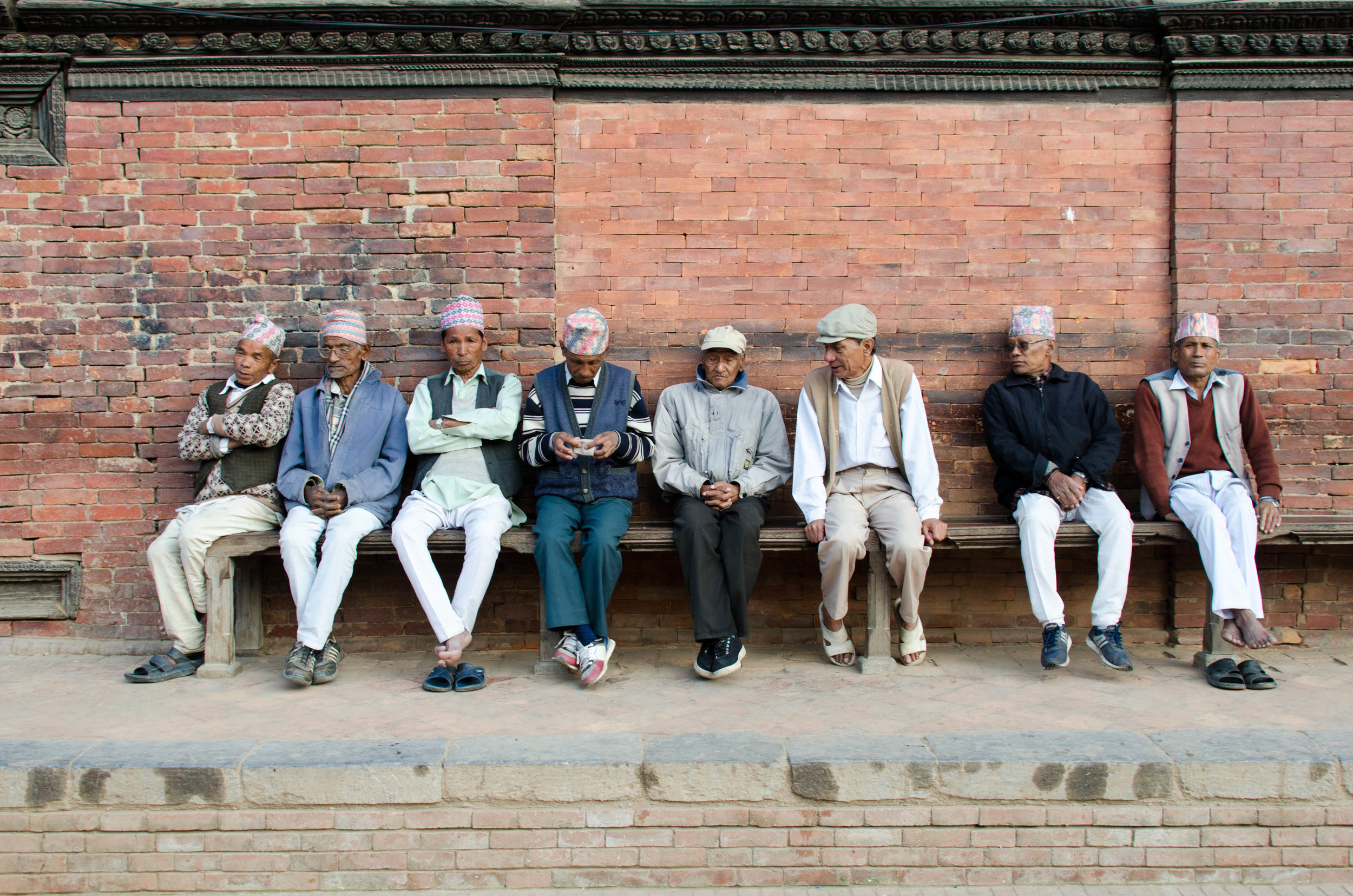
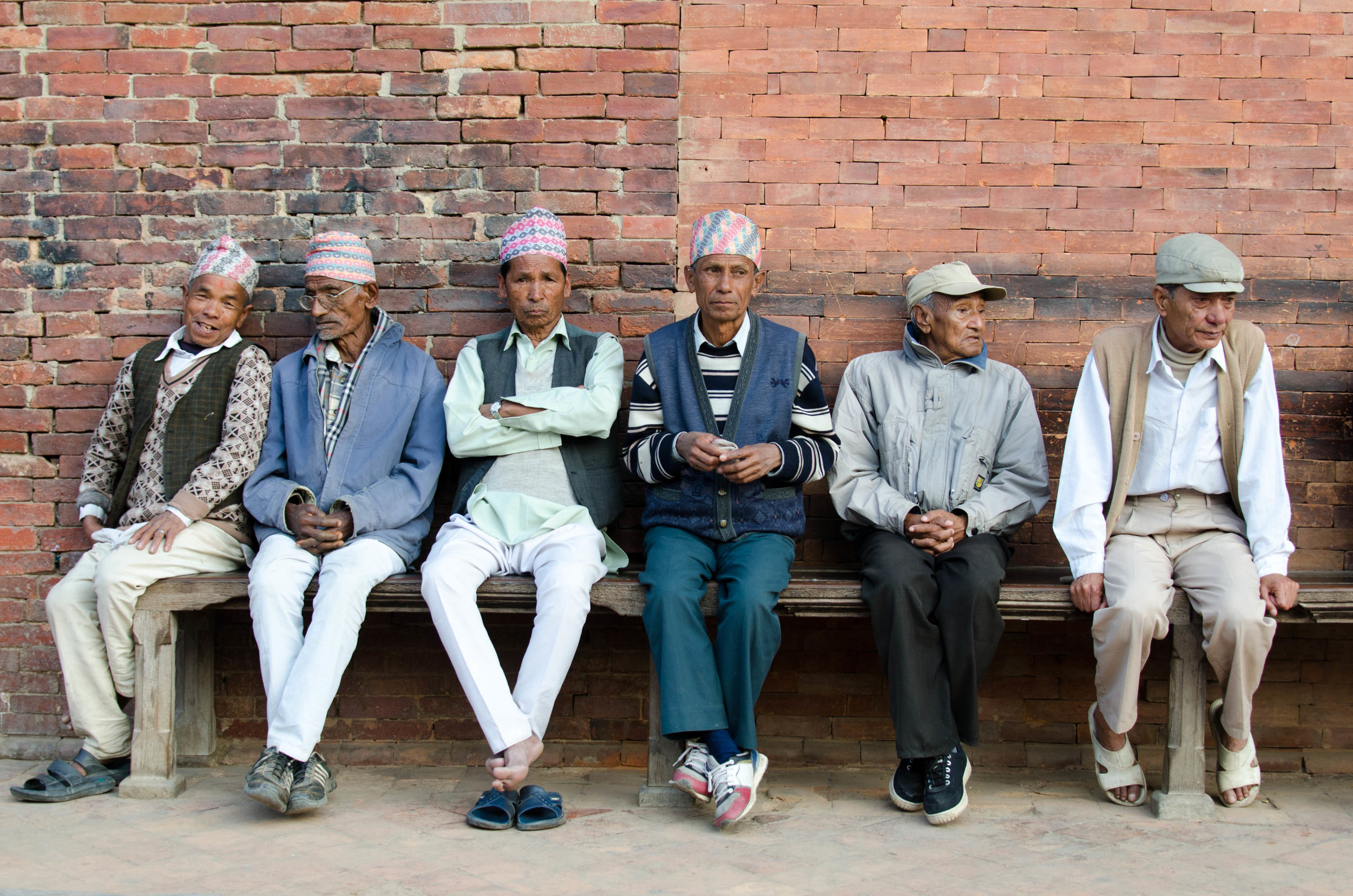
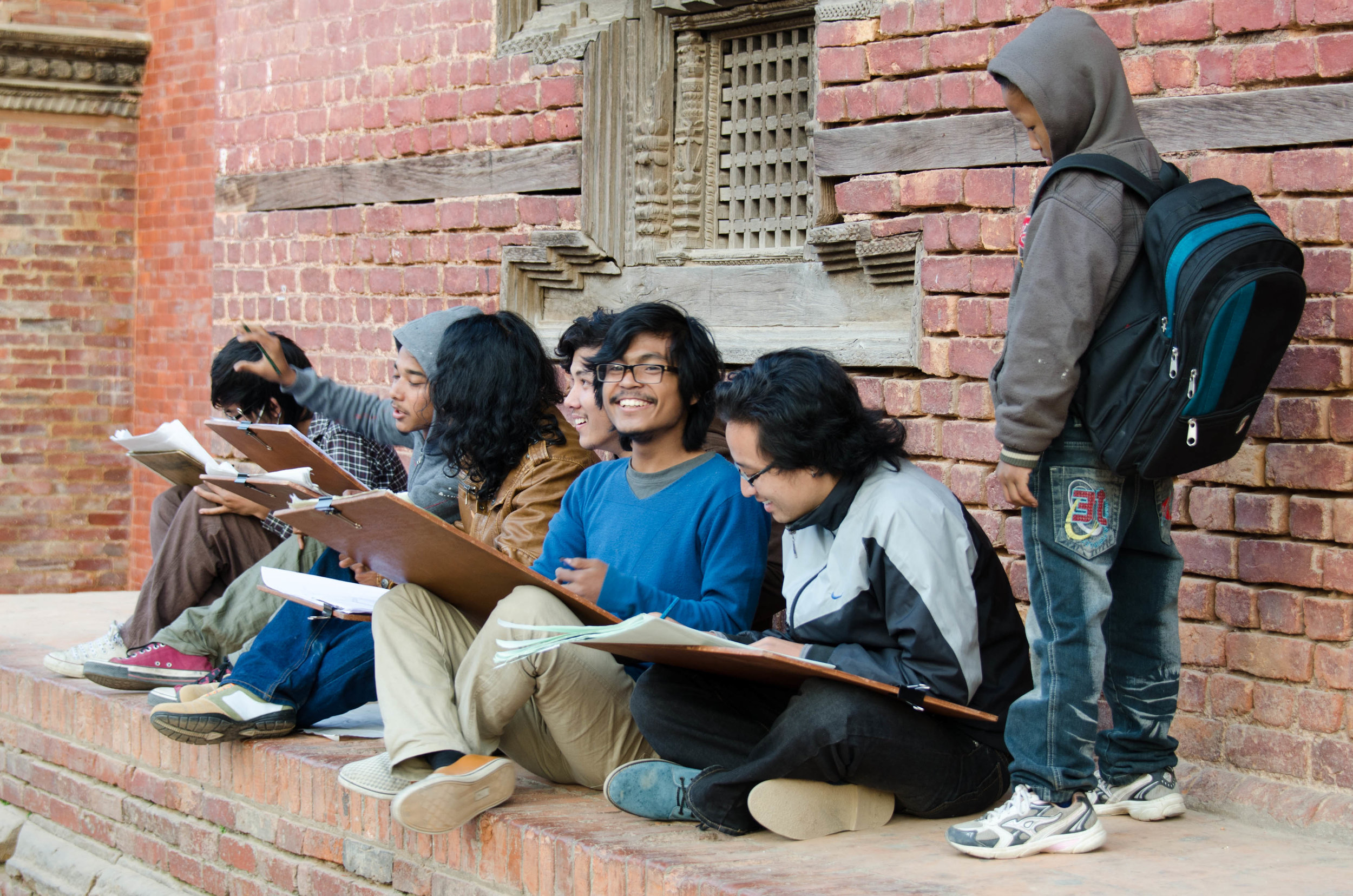

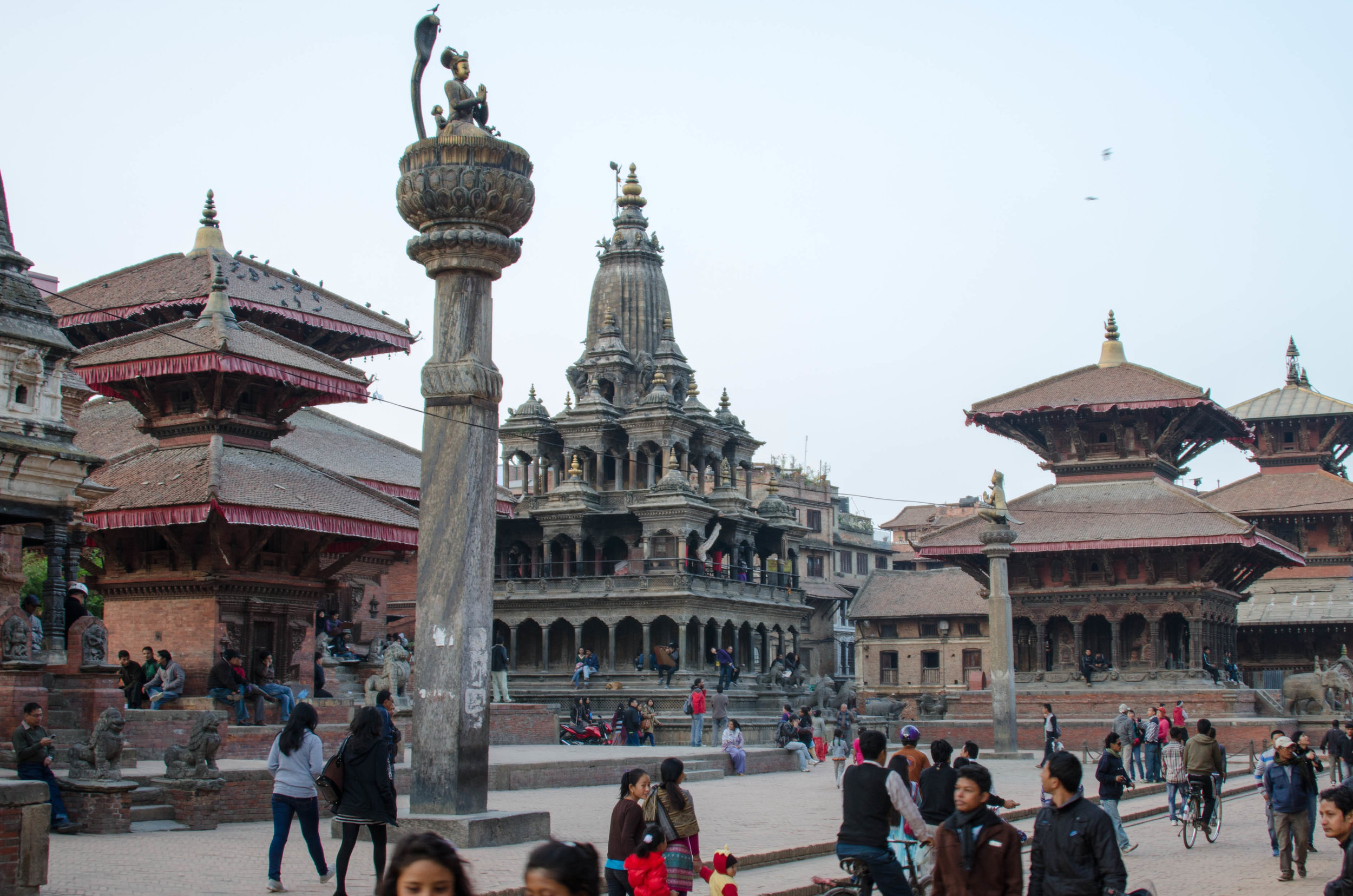
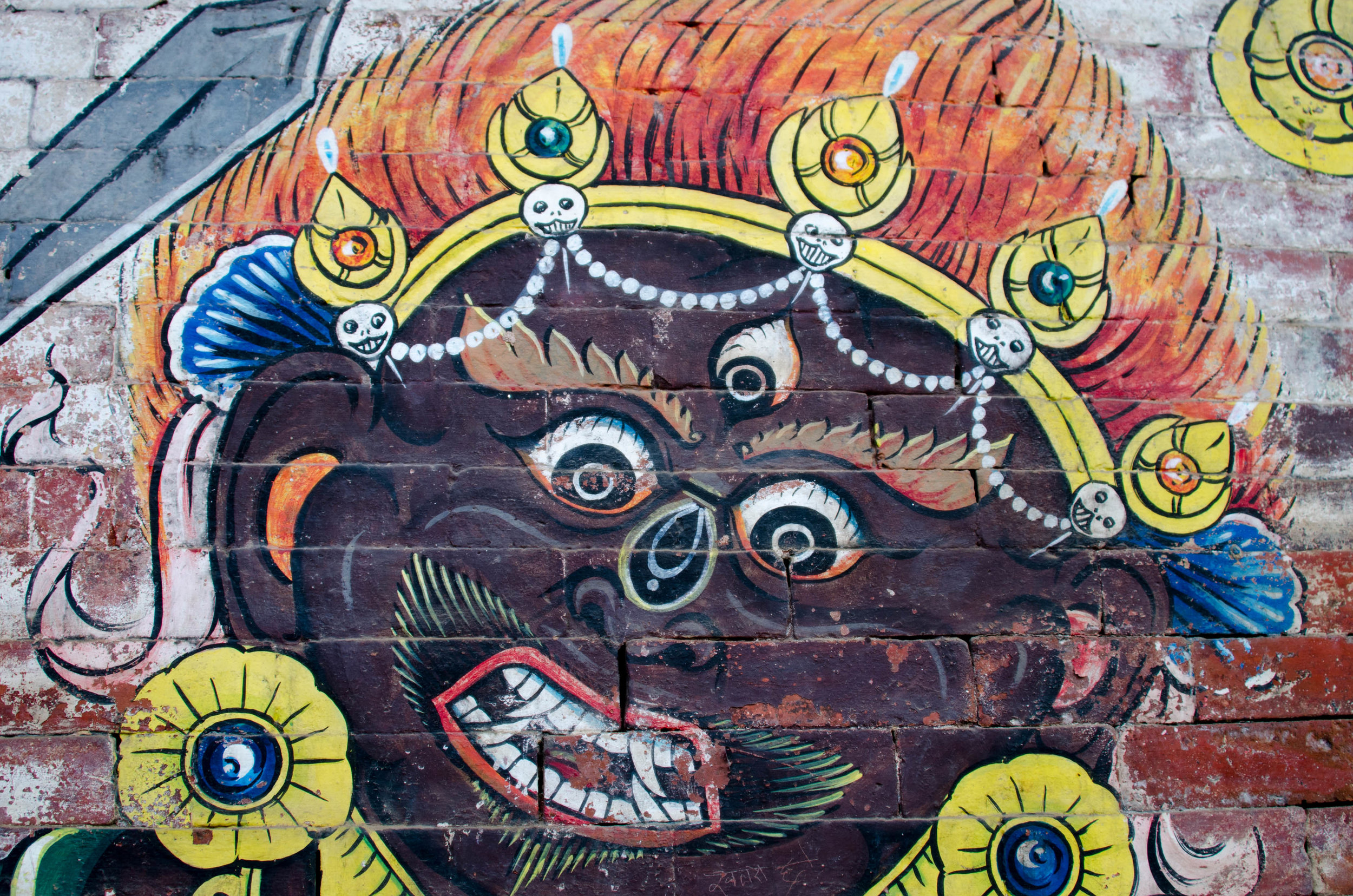

Patan Durbar Square feels like it's still in Kathmandu, but really it's located in the city of Lalitpur. An ancient king resided here. It's one of the three UNESCO World Heritage Sites. It wasn't as big as the Kathmandu Durbar Square, but it felt cleaner, and more like a little city square than a world heritage site, especially as I sat and watched a mother and father chase a ball around with their two infants. This game was participated by anyone walking by, which confused the little ones who were pretty much running in circles because they could never get to the ball in time and a passerby would have to stop it and kick it back to where it came from before it got lost.
On our way home, ("home" I should say) we stopped to pick up a yak wool scarf (or three) for me, my mom, and Zengerine! Holy warmth! It could easily double as a blanket, which is exactly what I need to survive these Nepalese nights! One of the beautiful striped ones will be on sale at Zengerine.com in the very near future!
